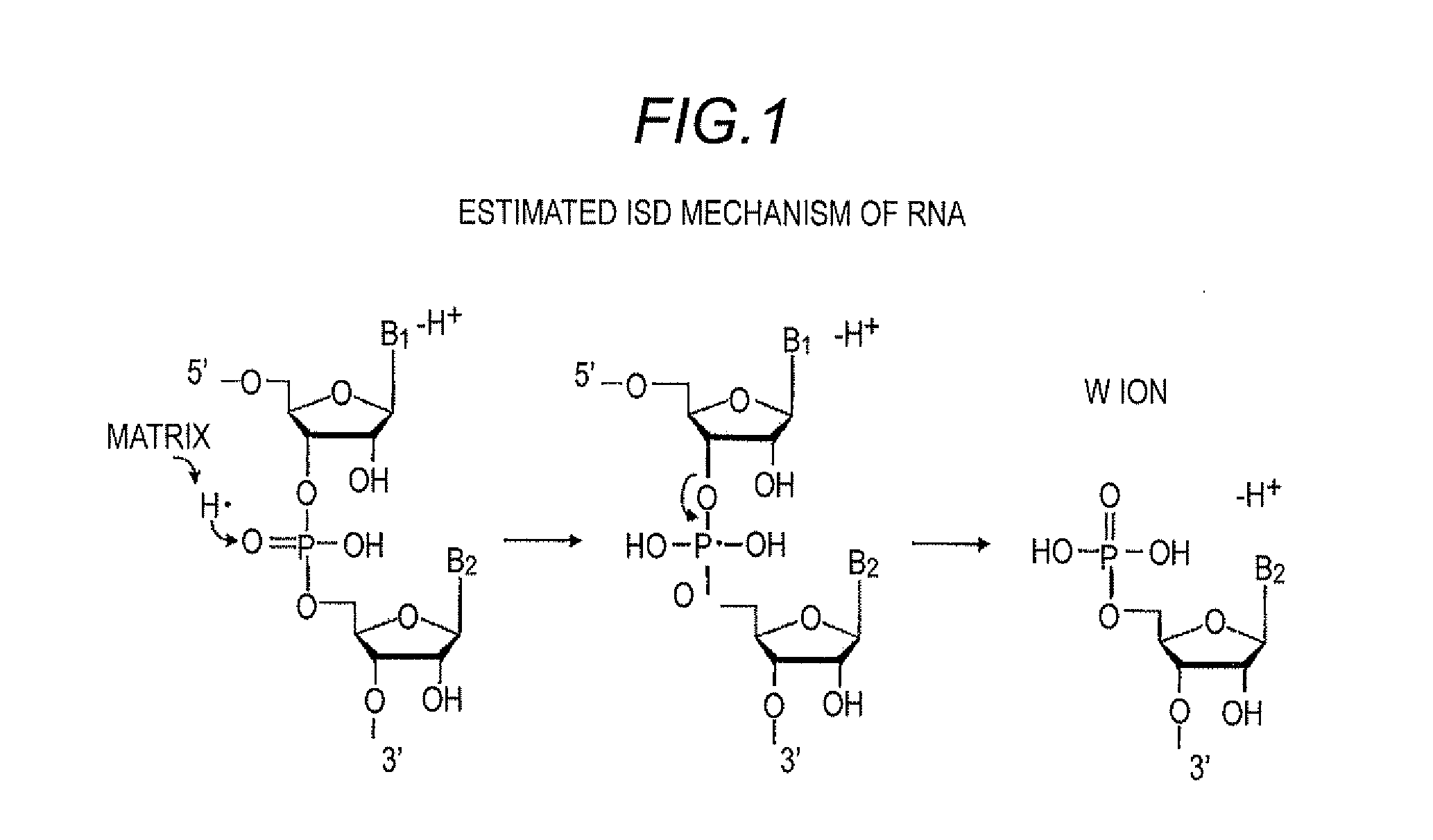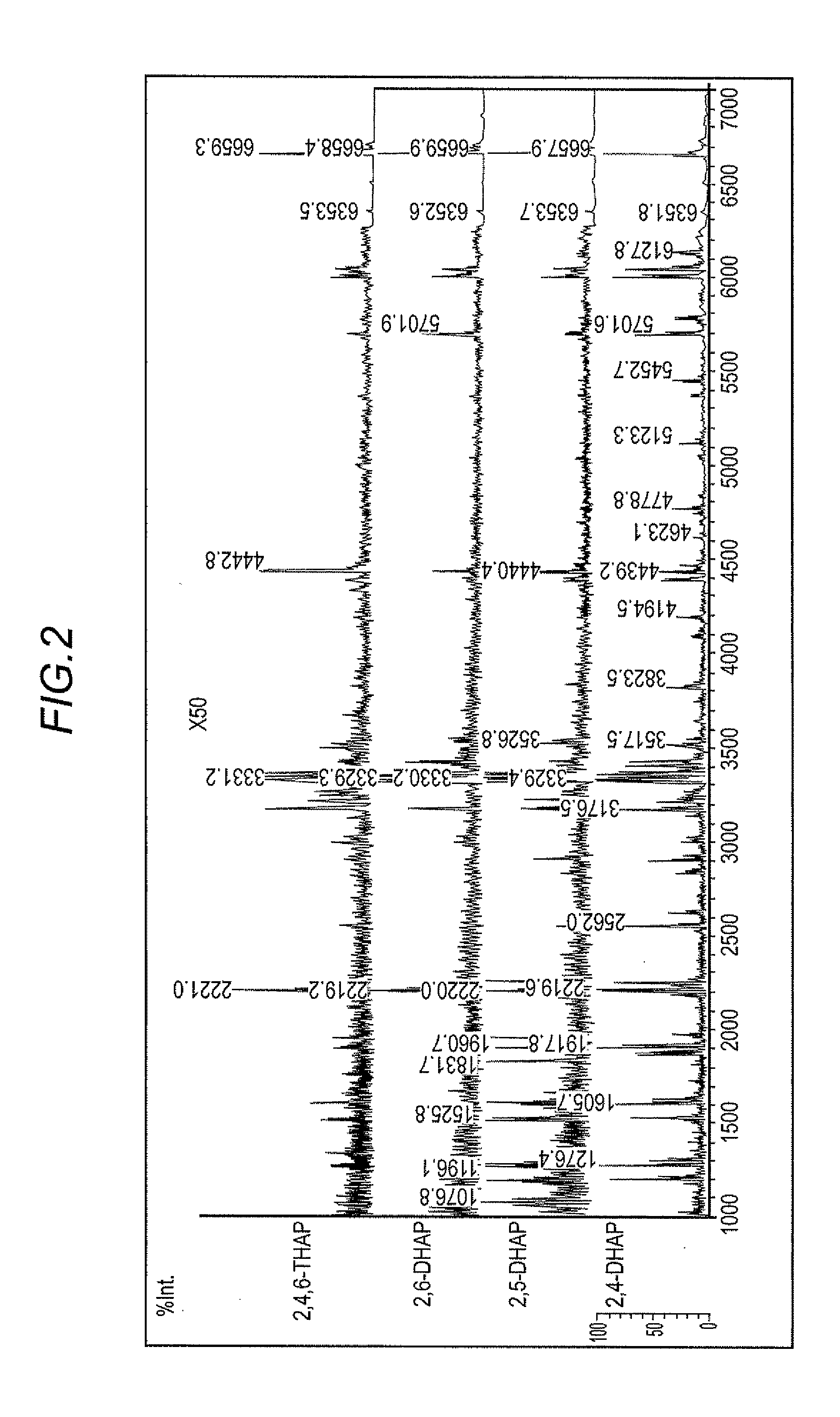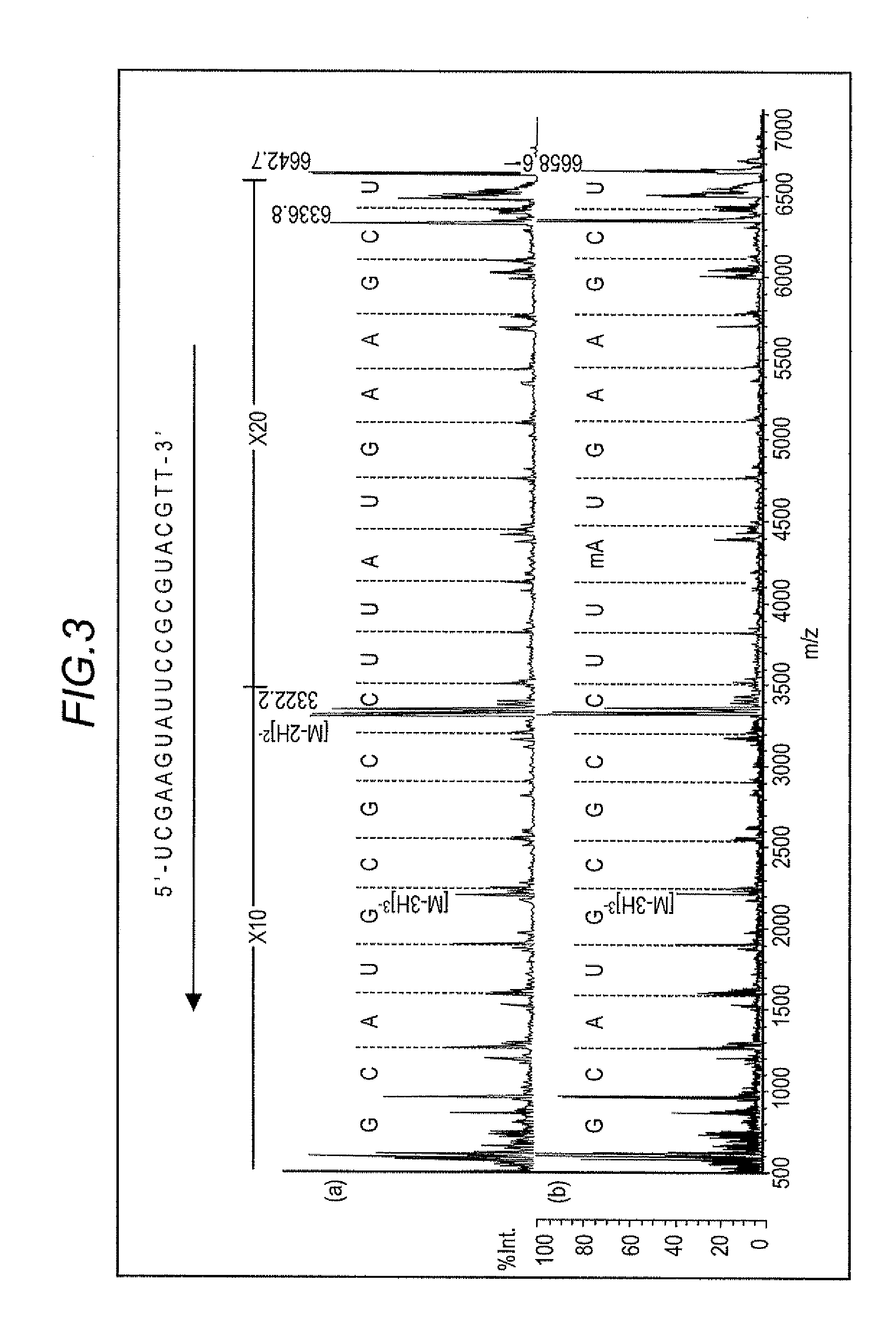Method for Sequencing RNA by In-source Decay Using Matrix Assisted Laser Desorption Ionization Time of Flight Mass Spectrometer
- Summary
- Abstract
- Description
- Claims
- Application Information
AI Technical Summary
Benefits of technology
Problems solved by technology
Method used
Image
Examples
embodiment 1
[0067]RNA samples were subjected to in-source decay analysis using as the matrix the following four compounds whose structure is shown below: 2,4-dihydroxyacetophenone; 2,5-dihydroxyacetophenone (for comparison); 2,6-dihydroxyacetophenone (for comparison) and 2,4,6-trihydroxyacetophenone (for comparison). The RNA samples that were analyzed were 21 bases long with a 2′-O-methylated adenosine positioned as the eighth base from the 5′ end. The specific sequence is 5′-UCG AAG U(mA)U UCC GCG UAC GdTdT-3′. (UCG AAG U(mA)U UCC GCG UAC G is identified as sequence number 1, and “mA” represents 2′-O-methyladenosine.) This RNA sample is identified hereafter as 2′-O-methylated RNA.
[0068]Each matrix was dissolved in an aqueous solution that included 70 mM of ammonium citrate dibase and 50% acetonitrile. The 2,4-DHAP, 2,6-DHAP and 2,4,6-THAP were formulated to a concentration of 20 mg / ml in the aqueous solution while the 2,5-DHAP was formulated to a concentration of 10 mg / ml to prepare the matrix...
embodiment 2
[0071]Using 2,4-DHAP as the matrix, MALDI-TOF MS measurements were performed on 2′-O-methylated RNA and RNA that was not 2′-O-methylated (non-methylated RNA) in the same manner as with Embodiment 1. The specific sequence of the non-methylated RNA was 5′-UCG AAG UAU UCC GCG UAC GdTdT-3′. (UCG AAG UAU UCC GCG UAC G is identified as sequence number 2.)
[0072]FIG. 3 shows the mass spectrum of the fragment ions that were generated by in-source decay ((a): non-methylated RNA and (b): 2′-O-methylated RNA). w-series fragment ions are detected, and, among the 21 bases, all bases except for 2 bases at the 3′ end could be associated with their ions, thus sequencing the RNA. The position of the methylation-modified base (mA) could also be confirmed.
PUM
| Property | Measurement | Unit |
|---|---|---|
| Mass | aaaaa | aaaaa |
| Length | aaaaa | aaaaa |
Abstract
Description
Claims
Application Information
 Login to View More
Login to View More - R&D
- Intellectual Property
- Life Sciences
- Materials
- Tech Scout
- Unparalleled Data Quality
- Higher Quality Content
- 60% Fewer Hallucinations
Browse by: Latest US Patents, China's latest patents, Technical Efficacy Thesaurus, Application Domain, Technology Topic, Popular Technical Reports.
© 2025 PatSnap. All rights reserved.Legal|Privacy policy|Modern Slavery Act Transparency Statement|Sitemap|About US| Contact US: help@patsnap.com



